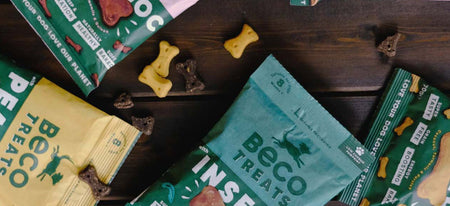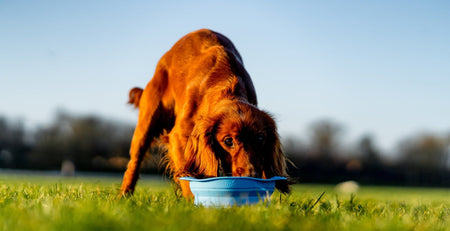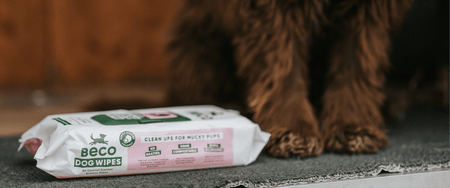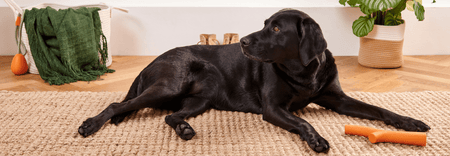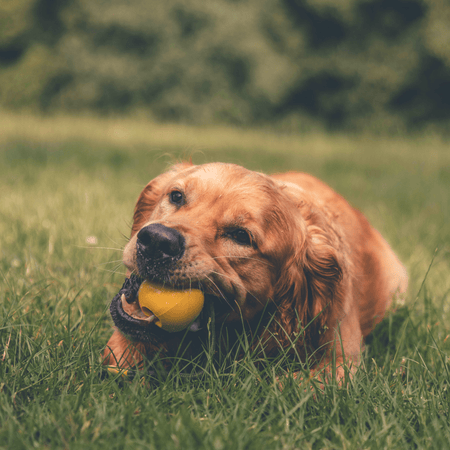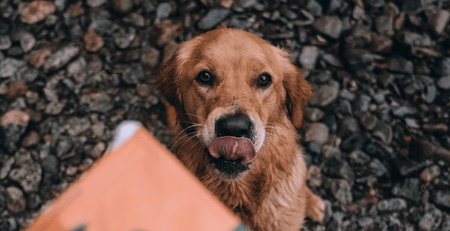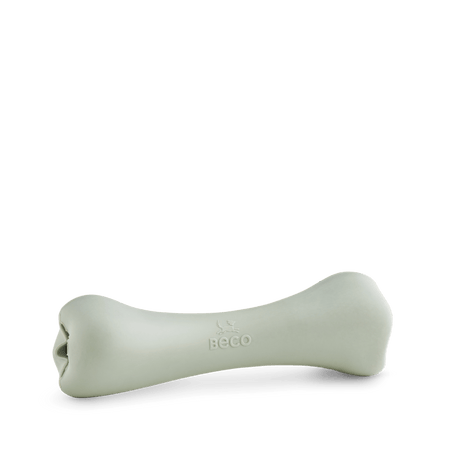Ah, a question we can all relate to. Understanding how many snacks and treats you can eat without putting on too much extra timber is a difficult question to answer. However, when it comes to your puppy, feeding them too many treats can be more concerning than if we were to treat ourselves to a little too much in the snack cupboard.
As treats are an important part of training your puppy, it’s not something which should be cut out completely, instead you should know how many they are allowed to have in a day.
In this article we are going to explore why we give our dogs treats, how many treats are too many and the different types you can -well- treat your pup to.
How many treats can I give my puppy per day?
Treats should make up no more than about 10% of your dog's daily calories. So if your puppy is allowed 1000 calories a day only 100 calories can be in the form of a treat.
Calorie intake is worked out by the weight of your puppy and don’t forget to check back regularly as they will be putting on weight in front of your eyes! To work out how many calories a day your puppy needs, have a look at the chart below - e.g. if your pup is 3 months old and weighs 4kg, they should be having 375 calories per day -37.5 of which can be in the form of a treat.

Why treats?
Treats aren’t just there because we want to spoil our dogs and make them love us, they are a really important part of training your puppy. Rewarding their actions teaches your puppy that they are doing the right thing and reinforces other forms of rewards such as letting them play with a favourite toy or verbal praise.
What treats can I give my puppy?
There’s a clue in the name! A treat is something that your puppy will find exciting - different from their normal food and associated with reward for good behaviour. By experimenting with different types of food you can discover what really makes your puppy happy. Unless they have a labrador's appetite, in which case you might find they find every form of food overwhelmingly exciting.
Off the shelf treats
Go into any pet shop and there will be a huge array to choose from: Gravy bones, chicken chewy cubes, salmon nibbles and animal shaped dog biscuits to name a few. Some are specifically called training treats because they are very low in calories so you can feel assured that you are not over feeding your puppy when using them to reward. If you feed your dog kibble, you can also use some of that during the day as individual treats and that won’t eat into their ten percent treat allowance.
Tip: Look for products especially designed for puppies as size really does matter - adult treats may be too big for your pup, so if you do end up purchasing them you’ll likely need to break them in half.
Tip: Look for products especially designed for puppies as size really does matter - adult treats may be too big for your pup, so if you do end up purchasing them you’ll likely need to break them in half.
Homemade treats
Try carrot sticks, cucumber cubes, broccoli , apples or even bananas. These have the advantage of containing vitamins and minerals and being close to hand. Freezing them can make them last longer and also help soothe teething gums. Be aware that there are some fruits and vegetables your puppy can't eat.
Fruit and vegetables your dog can’t eat.
Avocado – can cause very upset stomach
Cherries – pits/stones contain cyanide which is toxic to dogs
Corn on the cob – the cob can cause blockages
Garlic – toxic to dogs
Grapes/raisins – toxic to dogs.
Grapefruit – very acidic and can upset your dog’s stomach
Leeks – toxic to dogs
Lemon – very acidic and can upset your dog’s stomach
Lime – very acidic and can upset your dog’s stomach
Mushrooms – certain types are toxic to dogs, so best to steer clear
Onion – toxic to dogs
Plums – stone/pit can be toxic or cause blockages and can often get left in the plum
Potatoes (raw) and potato plants – when raw they can be toxic and the plants and leaves can also be dangerous
Rhubarb – toxic to dogs
Tomato (unripe) and tomato plants – while the ripe red flesh is safe, the green parts can be toxic so best to avoid
Puppy bakes
How about making your own dog treats? Use ingredients you know your dog loves such as pumpkin, peanut butter, pears or chicken and bake a batch of biscuits, or bone-shaped bites. Don’t be tempted to add any sugar or salt though-these are doggy treats remember!
Human food
You may be tempted to give your puppy some scraps at the end of your meal - but this is where it gets tricky. Would you know how many calories there are in a piece of bacon rind? Going back to the example above - chances are the bacon rind would be more than the puppy’s whole daily allowance of 37.5 calories!
Are dog treats the same as dog food?
It is important not to give too many treats, otherwise they will be having more than 10% of your dog's daily calories. This is important because dog food is nutritionally balanced to get the correct amount of vitamins, minerals, protein and carbohydrate your pup needs. It is particularly crucial for puppies who will need the right nutrients to ensure healthy development of bones and muscle.
Imagine if you ate chocolate as half of your allowed daily calorie intake, yes it would be tasty, but it wouldn't provide you with the nutrients you need to stay healthy - and it would make you put on weight. It is exactly the same for your puppy and obesity in dogs causes many health problems such as joint disease, diabetes, and pancreatitis.
So remember, it’s not how many treats your puppy can have but the total calorie count.
How many treats is too much?
No they aren’t. Dog food is designed to meet all your puppy’s nutritional needs, Some treats will have high amounts of fat, oil, and carbohydrates making them irresistible to your dog and are intended for intermittent or supplemental feeding only.
Treats for teething

You will know that your puppy loves to chew. In part, this is because they are teething and some treats are specifically called chew treats because they are harder and denser than a dog biscuit treat. They are not ideal for puppies, however, as they can give them diarrhea so you may want to consider other ways of providing gum relief for your pup such as a chew toy or frozen carrots sticks. If you want to incorporate a treat to occupy your dog you could try a natural rubber treat ball or bone, filled with some veggies and kibble. These can also be frozen which will keep your pup busy for longer.
Whatever you decide to treat your puppy to, remember when introducing new foods to keep an eye out for any allergic reactions. If you have concerns about your puppy’s diet or weight please, as always, consult your vet for the best advice.

